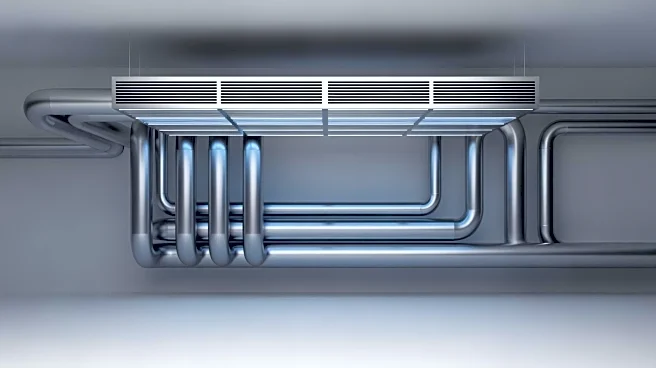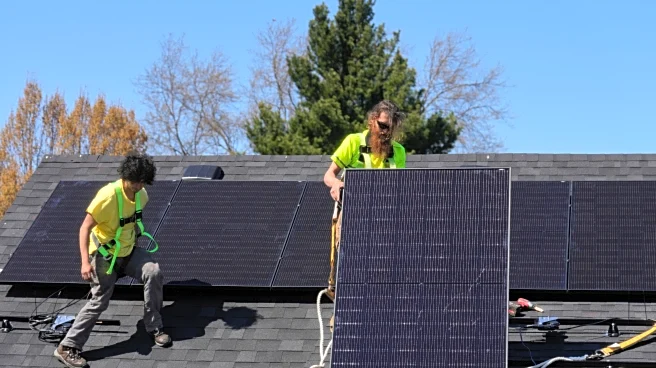What's Happening?
The Department of Homeland Security (DHS) is planning to nearly double the capacity of U.S. Immigration and Customs Enforcement (ICE) detention centers, increasing the number of detainees from approximately
55,000 to over 107,000 by the end of the year. This expansion involves opening or expanding 125 facilities, according to internal planning documents. A Washington Post analysis highlights that detainees in ICE facilities are more vulnerable to extreme heat exposure compared to those in federal, state, and county prisons. ICE detention centers experience an average of 29 days of dangerous heat per year, which is significantly higher than other prisons. The hottest 10 percent of ICE facilities endure an average of 93 days of unhealthy temperatures annually. Despite claims from DHS that all ICE facilities are air-conditioned, reports from detainees and inspections have raised concerns about the adequacy of cooling systems.
Why It's Important?
The expansion of ICE detention centers has significant implications for the health and safety of detainees, particularly in regions prone to extreme heat. The increased capacity could exacerbate existing issues related to heat exposure, potentially leading to health risks such as dehydration, heat stroke, and kidney disease. The planned expansions are concentrated in areas that already experience high heat days, raising concerns among advocates and researchers about the lack of clear policies to manage heat exposure. This development also highlights broader issues within the U.S. immigration system, including the treatment of detainees and the conditions within detention facilities. The expansion could impact public policy discussions around immigration enforcement and the standards of care in detention centers.
What's Next?
As DHS moves forward with its plans to expand ICE detention centers, there may be increased scrutiny from elected officials, watchdog agencies, and advocacy groups regarding the conditions within these facilities. The expansion could prompt further investigations into the adequacy of air conditioning and other measures to protect detainees from extreme heat. Additionally, there may be calls for policy changes to address the health and safety concerns associated with the expansion. The situation could also lead to legal challenges or legislative efforts aimed at improving conditions in detention centers and ensuring compliance with federal standards.
Beyond the Headlines
The expansion of ICE detention centers raises ethical and legal questions about the treatment of detainees and the responsibilities of the federal government to ensure humane conditions. The concentration of facilities in heat-prone regions may reflect broader systemic issues within the U.S. immigration system, including the prioritization of detention over alternative approaches to immigration enforcement. The situation also underscores the need for comprehensive data and transparency regarding conditions within detention centers, which could inform policy decisions and advocacy efforts.












